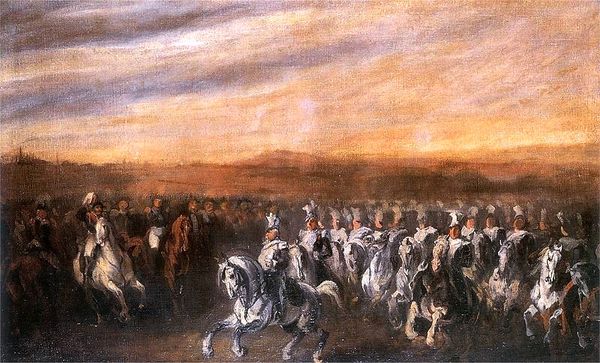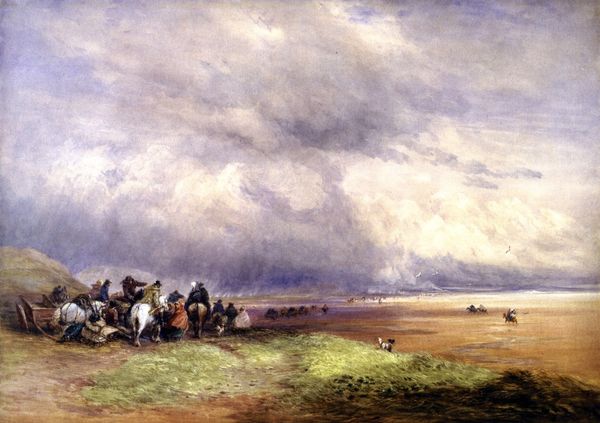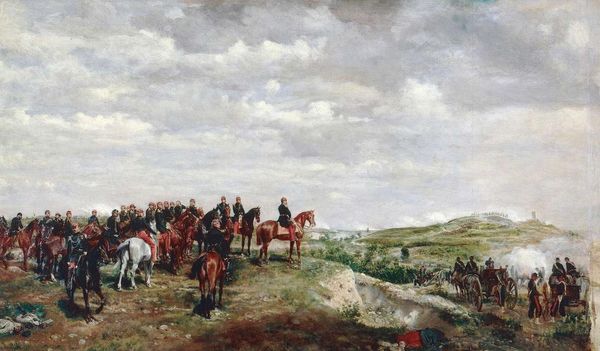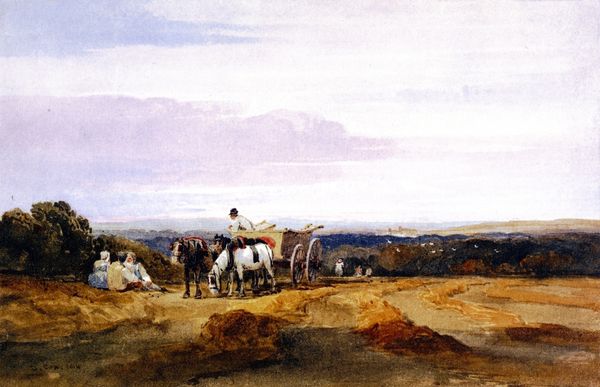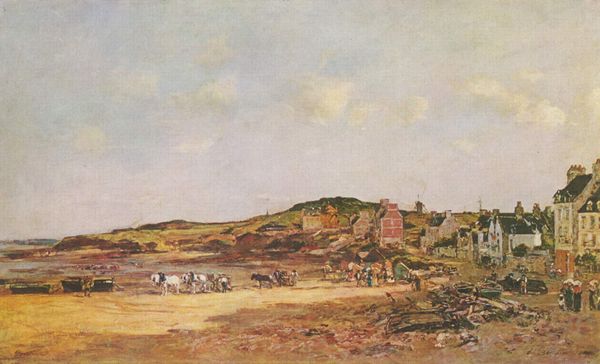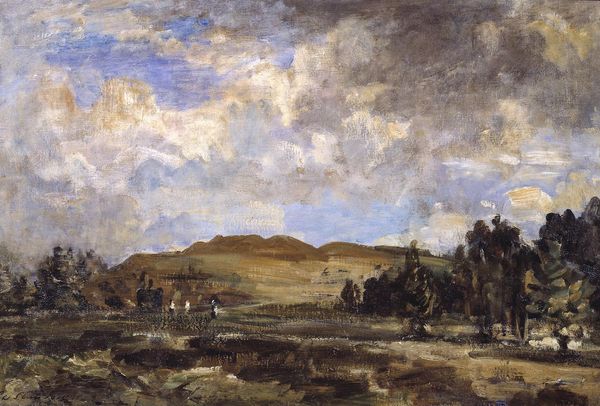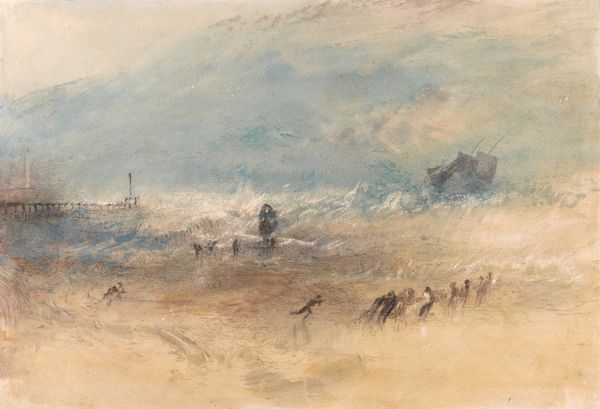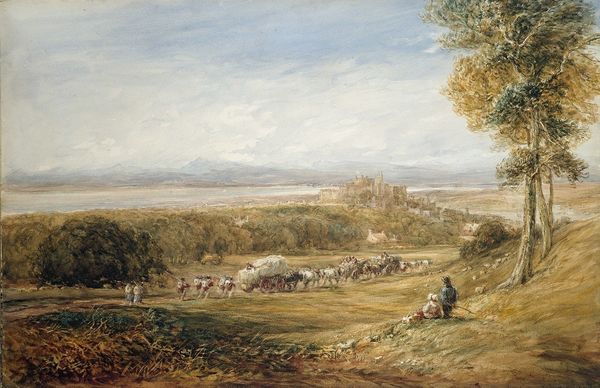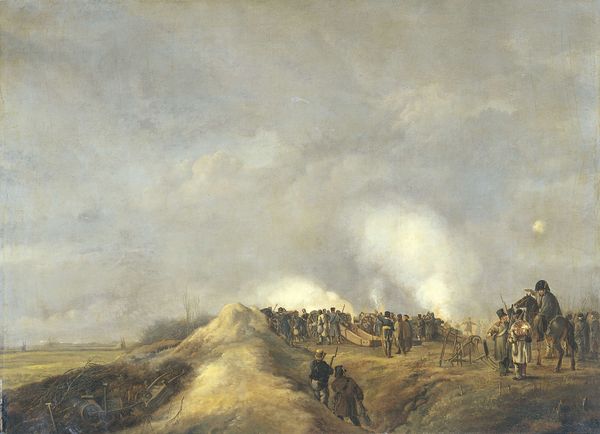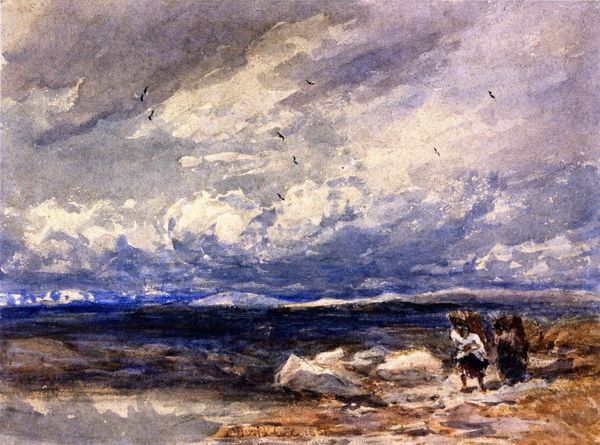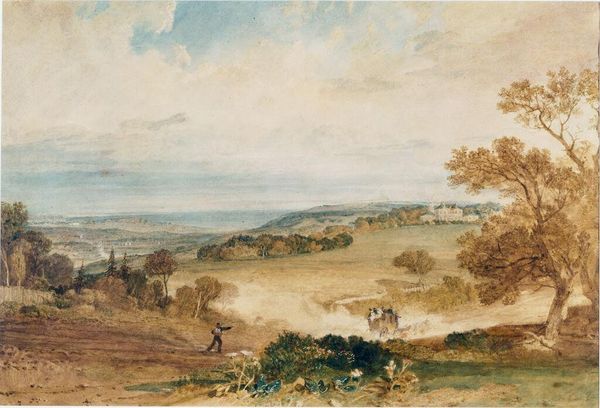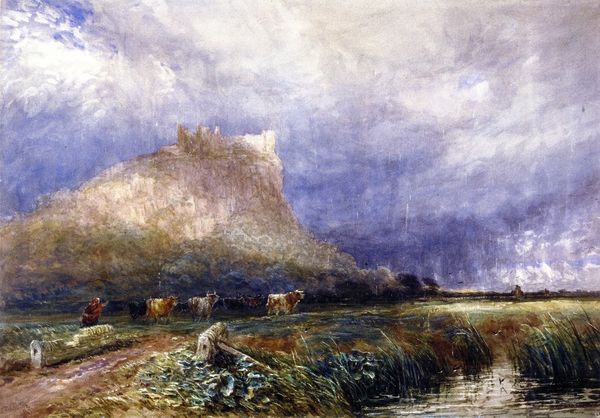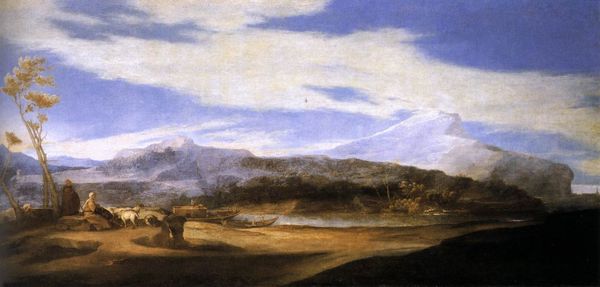
watercolor
#
landscape
#
figuration
#
watercolor
#
romanticism
#
genre-painting
#
watercolor
#
realism
Copyright: Public domain
Curator: We're looking at "Peace and War. Lympne Church and Castle," a watercolor created around 1838 by David Cox. Editor: Immediately, the atmosphere strikes me. It feels heavy, pregnant with anticipation. The watercolor palette leans toward muted blues and earthy browns, almost a premonition of storm and strife. Curator: The piece juxtaposes elements suggesting both tranquility and conflict, very telling of its historical period. You've got this serene landscape punctuated by Lympne Church and Castle overlooking what appears to be marching soldiers. Consider the social unrest in England at the time and anxieties around potential conflicts. Cox might be subtly commenting on the ever-present tension between idealized peace and the reality of war. Editor: It’s interesting how Cox uses watercolor to create a sense of depth, pulling us into that space. But tell me more about these soldiers; what is the politics behind them, the potential deployment they may encounter? There’s a certain vulnerability in their small scale, a potent comment on the role of the individual within the larger military complex. Curator: Precisely! Cox positions these uniformed individuals in an open setting, as though on display or readily deployable at the behest of external authority. We see individuals sacrificing personal comfort to embody the colonial mandate, yet they seem reduced within nature. Moreover, if we think about visual representations of British power, we note that Cox did not create many military scenes, which perhaps explains the painting's focus on anxiety instead of pomp. Editor: The church in the distance reinforces that, I think. Even institutions built on notions of peace are implicated within histories of conflict. But Cox's approach softens potentially inflammatory critique; even the title has some subtlety, does it not? Curator: Certainly. He doesn't deliver any clear moral message; he portrays this duality, forcing the viewer to reconcile what peace and conflict mean against the backdrop of both church and Castle in 19th century English life. Editor: Indeed. A complex interplay, visually and conceptually. I initially found the watercolor brooding, but now it's clearer how art can give insight. Curator: Right. There’s no simple narrative offered; we find a dialogue between peace and conflict that demands that we examine society.
Comments
No comments
Be the first to comment and join the conversation on the ultimate creative platform.
